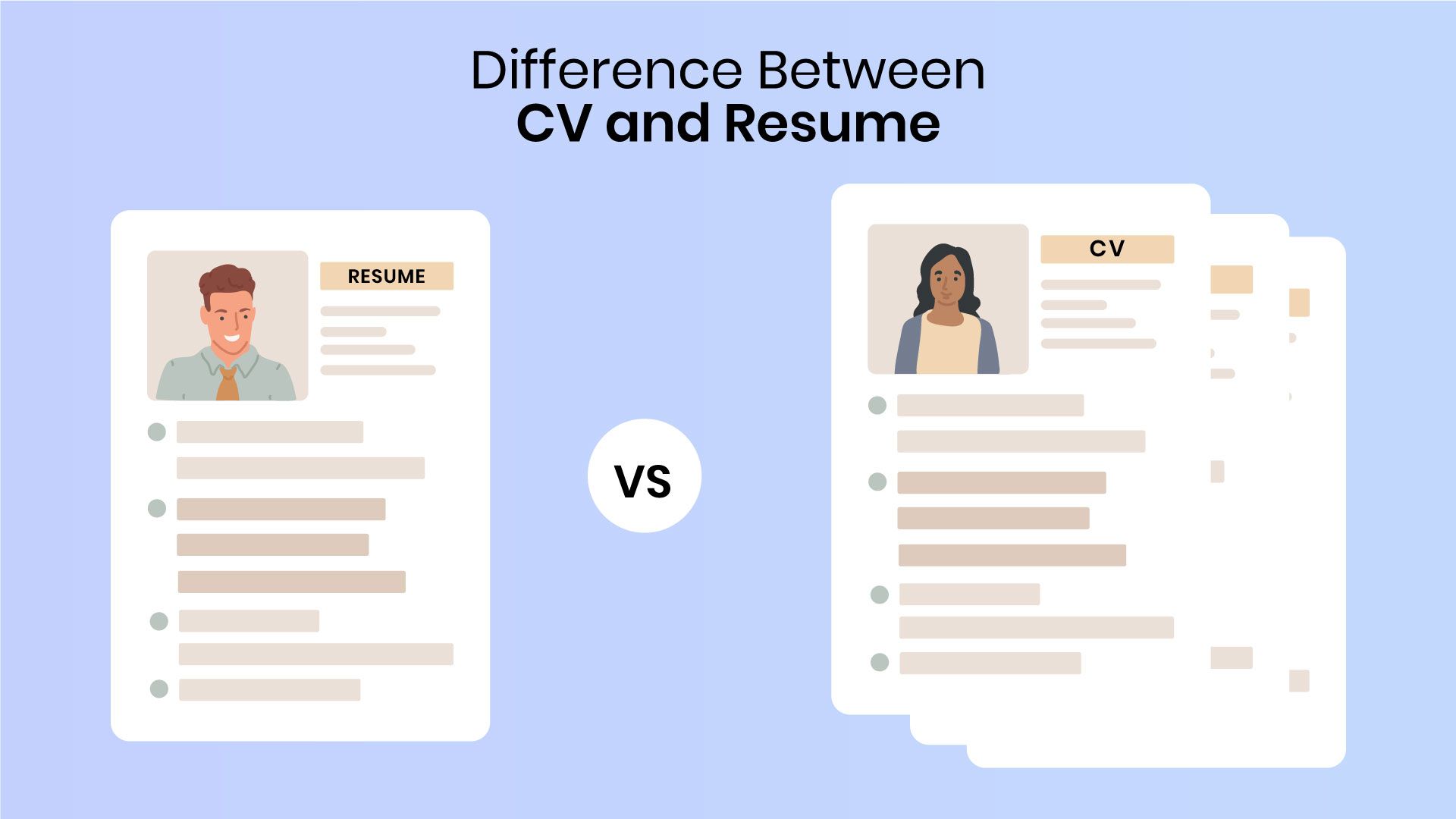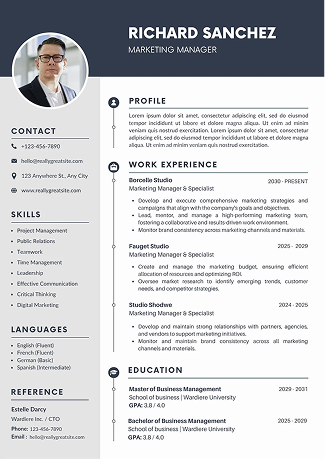Overview
Knowing the difference between a CV and a resume can help you choose the right format for your next job. This guide from SoundCV explains what sets them apart, when to use each, and includes examples, tips, and a comparison table. Learn how to create a professional CV or ATS-friendly resume that gets noticed.
When it comes to applying for a job, one of the most common questions people ask is about the difference between CV and resume. Many candidates assume both are the same, but they actually serve different purposes. Sending the wrong one can confuse recruiters or even cost you an interview.
In this guide, we’ll break down what is a CV, what makes it different from a resume, and when to use each. You’ll also see examples, formatting tips, and a quick comparison table to help you decide which document fits your job application best.
What Is a CV?
The term ‘CV’ stands for Curriculum Vitae, which is a Latin phrase meaning “course of life.” A CV gives a detailed overview of your entire academic and professional journey. It’s designed to showcase your education, research work, publications, certifications, and career milestones.
A CV is commonly used for academic, medical, or research-based roles, where the employer wants to see your complete background rather than just a summary of your recent jobs.
If you’re preparing one, check out our guides on how to write a CV for a job and best CV format for freshers to help you structure it professionally.
Key Features of a Curriculum Vitae
- Usually 2–8 pages long
- Includes education, degrees, and research experience
- Lists publications, awards, and academic projects
- May include memberships, conferences, and honors
- Used mainly for academic and government jobs
Example:
If you’re applying for a research fellowship or professorship, a CV would detail your published papers, seminars, and grants received. It focuses on your academic contributions rather than your job-specific skills.
A tip: Keep your CV updated even when you’re not actively applying. It serves as a career record for future references or grant applications.
What Is a Resume?
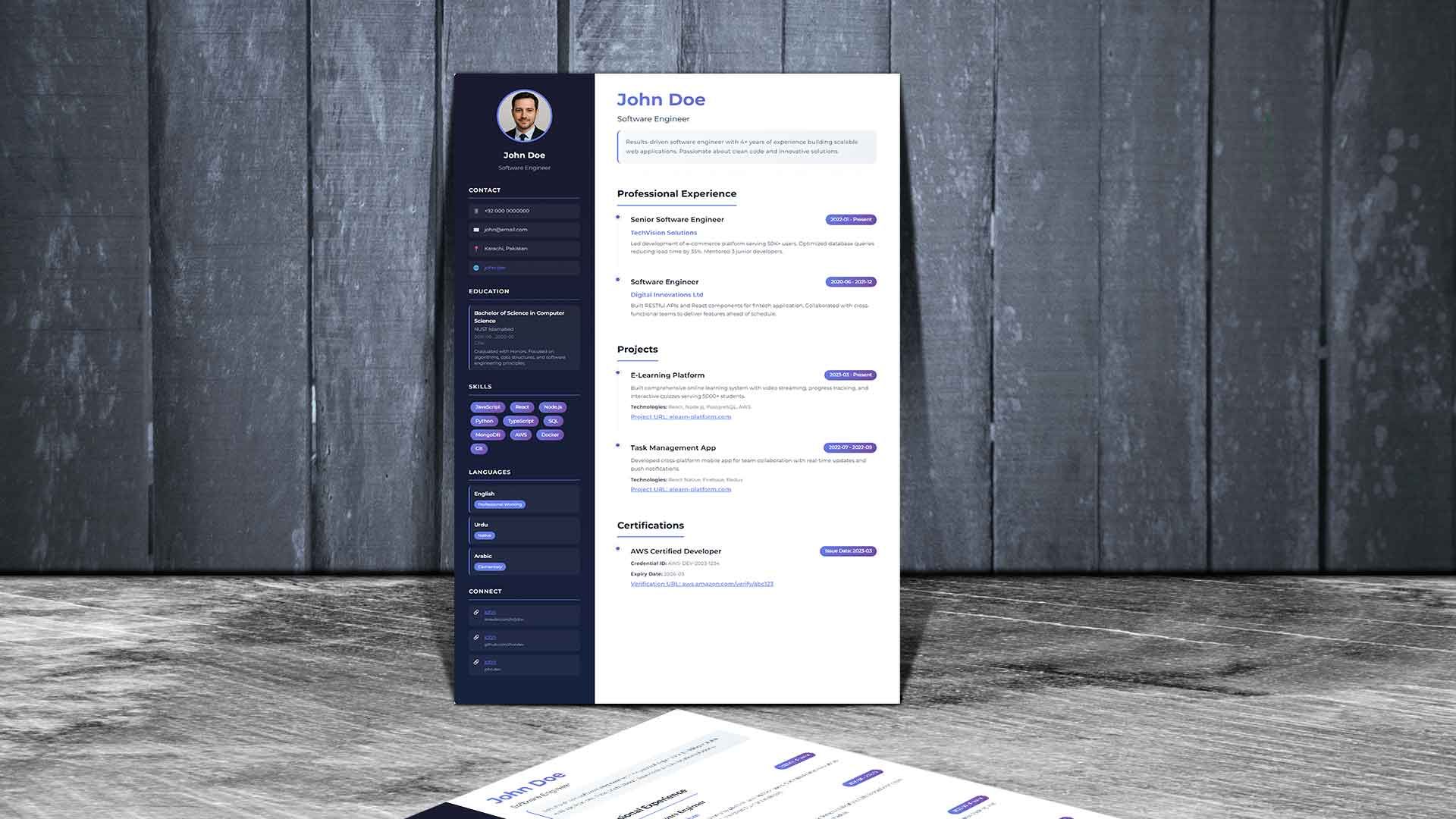
A resume is a short, focused summary of your skills, work experience, and achievements. The word comes from the French term meaning “summary.” It’s designed to be brief and job-specific, often customized for each position you apply for.
Unlike a CV, a resume rarely exceeds two pages. It emphasizes practical experience, measurable results, and job-relevant skills.
Key Features of a Resume
- One to two pages maximum
- Highlights key achievements and job results
- Tailored for each specific role
- Used in corporate, private, and business sectors
- Focuses on recent and relevant experience
Example:
If you’re applying for a marketing executive position, your resume should highlight your performance results like increasing brand engagement or sales by a percentage instead of describing every job you’ve ever had.
A resume helps recruiters quickly decide whether your experience fits the job requirements.
Also Read:30+ Best Resume Fonts
Curriculum Vitae vs Resume: Key Differences
Here’s a detailed comparison of curriculum vitae vs resume so you can see how they differ:
Feature | CV (Curriculum Vitae) | Resume |
Length | 2–8 pages, no fixed limit | 1–2 pages |
Purpose | Used for academic, research, and international roles | Used for corporate or private-sector jobs |
Content | Detailed record of education, achievements, research, and publications | Focused summary of skills, experience, and accomplishments |
Customization | Rarely customized | Always customized per job posting |
Tone | Formal and academic | Professional and results-driven |
Use Cases | Universities, research institutes, government roles | Corporate, business, and startup hiring |
As you can see, the difference between CV and resume lies mainly in length, detail, and purpose. A CV shows your entire career, while a resume highlights only what’s most relevant to a particular job.
Is CV and Resume the Same?
No, they are not the same. Although both documents summarize your professional life, the scope and purpose differ.
Think of a CV as your complete biography in professional terms, while a resume is a highlight reel short, sharp, and tailored.
Using them interchangeably can confuse employers, especially in countries where one format is preferred over the other. For instance, the USA and Canada use resumes, while the UK, Europe, and parts of Asia prefer CVs.
Also Read:Email Format for Sending Resume
When Should You Use a CV vs Resume?
Knowing when to use a CV vs resume depends on the type of job, location, and industry you’re applying to. Each document serves a unique purpose a CV gives a full picture of your academic and professional life, while a resume focuses on highlighting relevant experience for a specific role.
Use a CV when applying for:
Academic, research, or university positions — such as lecturer, researcher, or professor roles where your publications, grants, and teaching experience matter.
Medical or healthcare jobs requiring detailed records — including positions like doctor, clinical researcher, or medical scientist.
International opportunities (UK, Europe, Middle East, and Africa) — in these regions, “CV” is the standard term for professional job applications, even for corporate roles.
Government or public sector roles — especially where formal qualifications, years of service, and certifications must be documented.
A CV is best when employers need a comprehensive overview of your career. For instance, if you’re applying for a research fellowship at Oxford University, your CV should include every publication, academic project, and grant you’ve received.
Use a Resume when applying for:
Corporate or business roles (USA, Canada, Australia) — including jobs in sales, marketing, administration, and management.
Technology and digital industries — such as software development, UX/UI design, or data analysis, where concise and skills-focused resumes perform better.
Creative and marketing fields — where visual layout, achievements, and project outcomes matter more than long academic details.
Internships and entry-level positions — where recruiters want to see key skills, education, and relevant coursework at a glance.
A resume works best when you want to tailor your application to a specific job. For example, if you’re applying to a digital marketing agency in New York, use a one-page resume highlighting campaign results, tools you’ve mastered, and measurable outcomes rather than an academic timeline.
In short, a CV is a detailed career record, while a resume is a targeted marketing document. If you’re applying to a university in London, go with a CV. But if you’re sending your application to a tech startup in San Francisco, a resume will make a stronger impact.
Mini CV and Resume Sample Outlines
Mini CV Example
- Full Name & Contact Information
- Education (detailed with degrees and institutions)
- Research Work and Publications
- Professional Experience (detailed, chronological)
- Awards, Grants, and Certifications
Mini Resume Example
- Full Name & Contact Information
- Professional Summary (2–3 sentences)
- Key Skills (relevant to the job)
- Work Experience (brief and targeted)
- Education (basic details only)
Notice how the CV includes all milestones, while the resume filters out only what’s necessary for the job
Common Mistakes People Make
Many job seekers make errors when choosing between a CV vs resume. Here are some common ones to avoid:
Mistake | Why It’s a Problem |
Using a CV for a corporate job | Too long and detailed for recruiters |
Using the same resume for all applications | Misses job-specific keywords |
Ignoring ATS optimization | Resume may get rejected by automated systems |
Overstuffing a resume with irrelevant data | Makes it hard to spot key achievements |
Forgetting to update a CV | Leaves out recent work or awards |
Tips to Create the Right CV or Resume
For a Resume
- Keep it 1–2 pages long
- Start with a clear professional summary
- Use action verbs like “led,” “created,” and “achieved”
- Add measurable results (e.g., “boosted revenue by 20%”)
- Match keywords from the job description
- Save as a PDF for formatting stability
For a CV
- Be chronological and detailed
- Add academic history, publications, and research work
- Include awards, certifications, and memberships
- Update regularly as your career progresses
Pro tip: Use AI resume builders like Sound CV to check your resume score, optimize keywords, and make it ATS-friendly before you submit it.
Conclusion
Understanding the difference between CV and resume helps you present your qualifications the right way.A CV gives a full picture of your academic and professional life, ideal for research or academic positions.A resume, on the other hand, is concise and tailored perfect for business, marketing, or IT roles.
Before applying, always read the job posting carefully to know which format is expected. Sending the right document increases your chances of making a strong first impression and getting shortlisted.
FAQs
Frequently asked questions about this topic
Related Blogs
Explore more insights and guides you might like.

How to Make a CV for Internship: Step-by-Step Guide for Freshers
Learn how to make a CV for an internship with this easy step-by-step guide. Perfect for freshers looking to create a strong first impression.
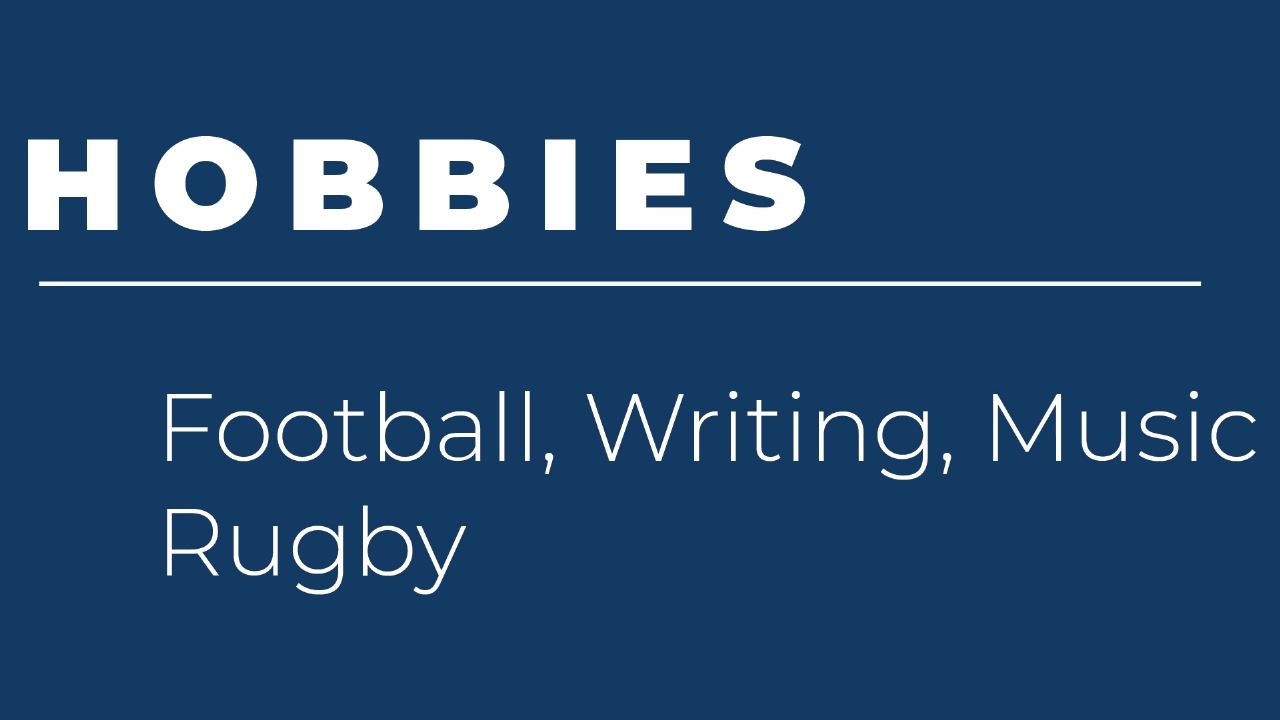
Hobbies for Resume: Best Examples & How to List (2025)
Show your personality and skills with the right hobbies on your resume—learn what to include, how to list them, and impress employers in 2025.
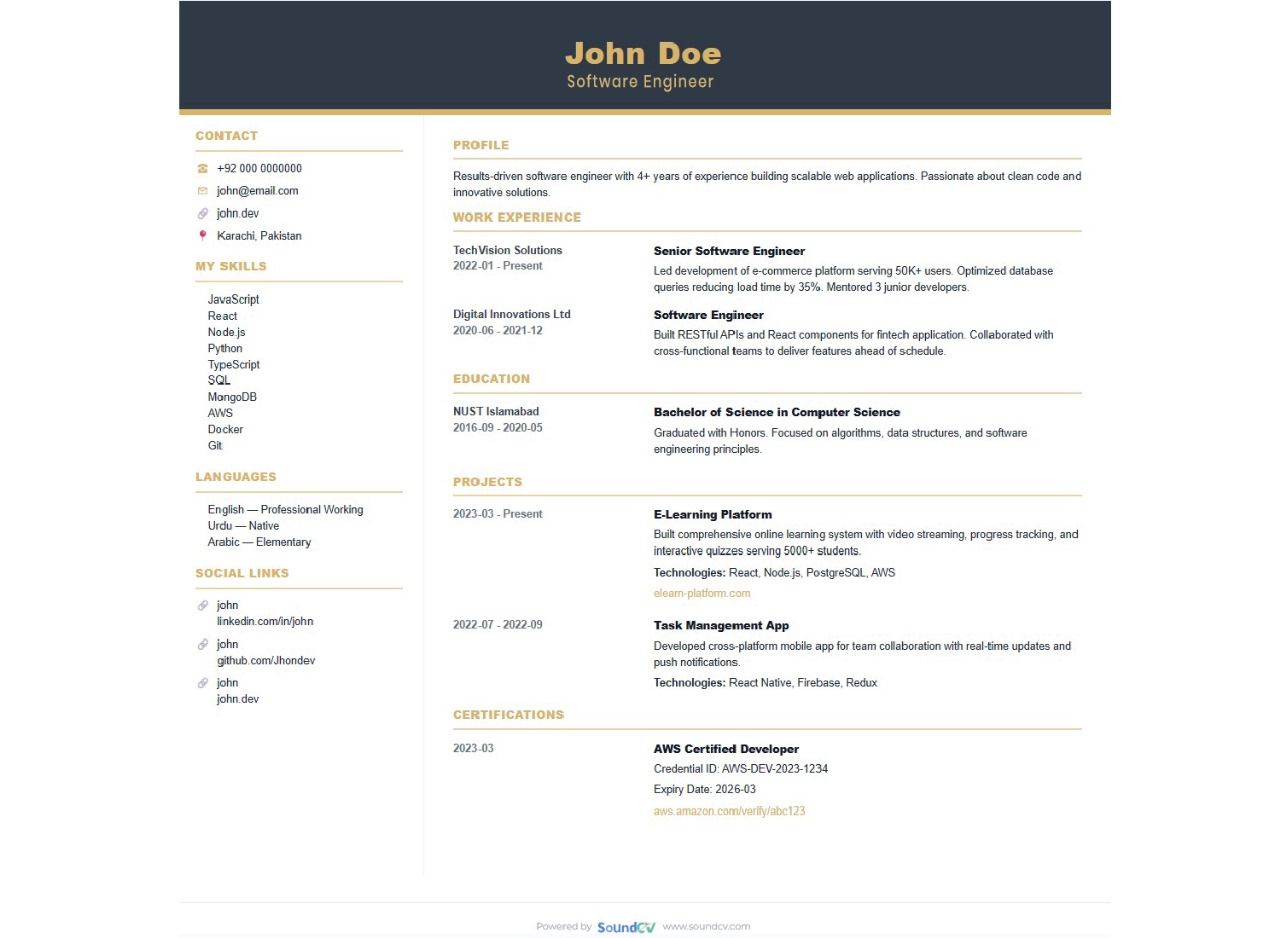
CV Format for Job (2025): Structure, Examples & Tips
Discover the best CV format for 2025 with proven structure, examples, and tips to land your next job faster.
